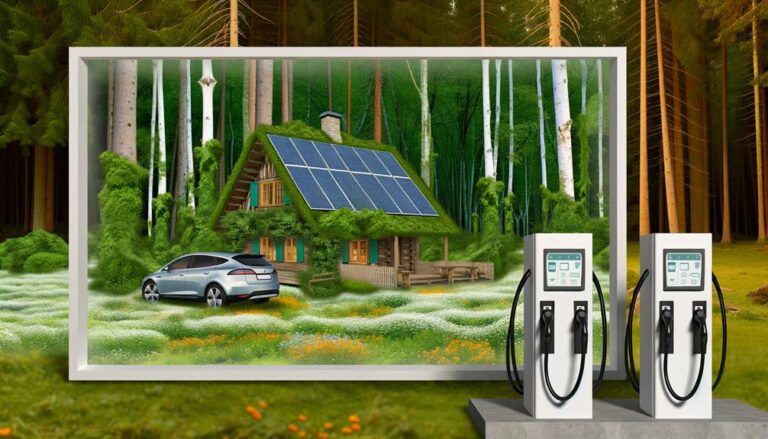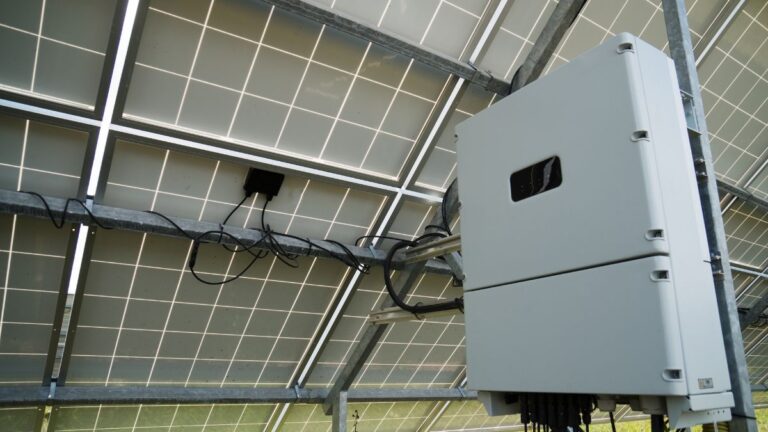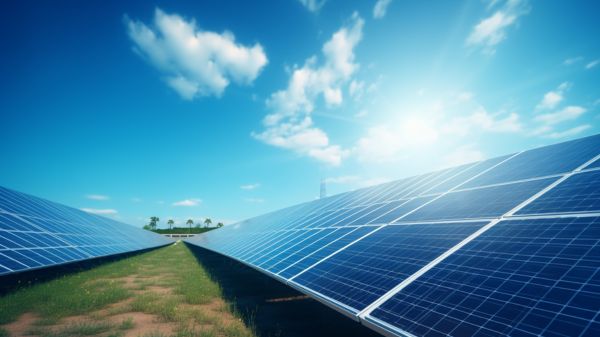The Impact of Photovoltaic Cells on Sustainable Development
Do you want to make a positive impact on sustainable development? Photovoltaic cells can be the solution you’re looking for. By harnessing the power of sunlight, these cells convert it into clean and renewable energy.
Imagine a world where our homes, buildings, and infrastructure are powered by the sun, reducing our reliance on fossil fuels and minimizing our carbon footprint.
In this article, we will explore the advantages of photovoltaic cells and how they contribute to a more sustainable and energy-independent future.
Join us on this journey towards a greener tomorrow.
Key Takeaways
- Photovoltaic cells contribute to sustainable development by reducing carbon emissions.
- Photovoltaic cells integrated into infrastructure help offset energy consumption and reduce reliance on fossil fuels.
- Photovoltaic cells enable energy independence by generating renewable energy in remote areas and integrating into various applications.
- Photovoltaic cells have economic implications, creating jobs, and contributing to overall economic growth and sustainability.
Advantages of Photovoltaic Cells
What are the benefits of using photovoltaic cells for sustainable development? Photovoltaic cells offer several advantages that make them a viable option for renewable energy generation.
One of the key benefits is their cost effectiveness. Over the years, the cost of photovoltaic cells has significantly decreased, making them more accessible and affordable for both residential and commercial use.
Additionally, photovoltaic cells provide a clean and sustainable source of energy. Unlike fossil fuels, which contribute to air pollution and global warming, photovoltaic cells generate electricity without emitting harmful greenhouse gases. This makes them an environmentally friendly choice for sustainable development.
Furthermore, photovoltaic cells have a long lifespan and require minimal maintenance, resulting in reduced operating costs.
Integration of Photovoltaic Cells in Infrastructure
To integrate photovoltaic cells in infrastructure, you can incorporate them into buildings and other structures as a source of renewable energy. This integration has become increasingly popular due to its cost effectiveness and the technological advancements in photovoltaic technology.
Here are four key benefits of integrating photovoltaic cells into infrastructure:
- Energy generation: By incorporating photovoltaic cells into buildings, you can generate electricity from the sun’s rays, reducing the reliance on fossil fuels and lowering carbon emissions.
- Energy savings: Photovoltaic cells can help offset the energy consumption of buildings, resulting in lower electricity bills and long-term cost savings.
- Increased resilience: By integrating photovoltaic cells into infrastructure, you can create a more resilient energy system, as the cells can continue to generate electricity even during power outages or disruptions.
- Aesthetically pleasing: With advancements in photovoltaic technology, it’s now possible to integrate solar cells seamlessly into the design of buildings, enhancing their visual appeal.
Role of Photovoltaic Cells in Energy Independence
Photovoltaic cells play a crucial role in achieving energy independence. By harnessing the power of sunlight and converting it into electricity, these cells provide a sustainable and renewable source of energy.
One of the key advantages of photovoltaic cells is their ability to generate electricity in remote and off-grid areas, reducing dependence on traditional energy sources.
Additionally, photovoltaic cells can be integrated into buildings, vehicles, and even wearable devices, allowing for decentralized power generation. To further enhance energy independence, advancements in energy storage technologies are essential.
Efficient energy storage systems enable the storage of excess electricity generated by photovoltaic cells, ensuring a stable and reliable energy supply even during periods of low sunlight.
Improving photovoltaic cell efficiency and developing cost-effective energy storage solutions are vital steps towards achieving energy independence.
| Advantages of Photovoltaic Cells | Benefits of Energy Storage Technologies |
|---|---|
| Renewable and sustainable | Enables stable and reliable energy supply |
| Reduces dependence on traditional energy sources | Stores excess electricity generated by photovoltaic cells |
| Can be integrated into various applications | Ensures uninterrupted power supply |
| Provides decentralized power generation | Reduces reliance on grid infrastructure |
| Reduces carbon footprint | Enables utilization of excess electricity during periods of low sunlight |
Environmental Benefits of Photovoltaic Cells
By utilizing photovoltaic cells, you can contribute to the environmental benefits of sustainable development. Photovoltaic cells, also known as solar panels, harness the power of the sun to generate electricity. This renewable energy source offers several advantages when it comes to reducing emissions and protecting the environment.
Here are four key environmental benefits of photovoltaic cells:
- Reduced carbon footprint: Solar energy is a clean source of power that produces no greenhouse gas emissions or air pollutants during operation.
- Conservation of natural resources: Unlike fossil fuels, solar energy doesn’t require the extraction of finite resources like coal or natural gas.
- Preservation of ecosystems: Solar power production has minimal impact on natural habitats and ecosystems, helping to protect biodiversity.
- Improved air and water quality: By reducing reliance on fossil fuels, solar energy helps to improve air quality by reducing harmful emissions and water pollution associated with traditional power generation methods.
Economic Implications of Photovoltaic Cells
Harnessing the power of solar energy through photovoltaic cells brings significant economic implications to sustainable development. Not only do photovoltaic cells provide clean and renewable energy, but they also create job opportunities and contribute to cost effectiveness.
According to a study conducted by the International Renewable Energy Agency (IRENA), the solar industry has been a key driver of job creation globally. In 2020 alone, the sector employed over 3 million people, and this number is expected to grow significantly in the coming years. As governments and businesses invest in solar energy, more jobs will be created, providing employment opportunities and boosting local economies.
Furthermore, photovoltaic cells have become increasingly cost-effective over the years. The cost of solar panels has dropped significantly, making it a viable and affordable option for individuals and businesses. This cost reduction, coupled with government incentives and tax credits, has made solar energy an attractive investment. Switching to solar not only saves money in the long run but also contributes to overall economic growth and sustainability.
To highlight the economic benefits of photovoltaic cells, the following table provides a comparison of job creation and cost-effectiveness in the solar industry:
| Job Creation | Cost-Effectiveness | |
|---|---|---|
| Photovoltaic cells | High | Increasing |
| Other renewable energy sources | Varies | Varies |
| Fossil fuels | Limited | Decreasing |
| Non-renewable energy sources | Declining | Expensive |
As the table illustrates, photovoltaic cells outperform other renewable energy sources in terms of job creation and cost-effectiveness. This makes them a promising solution for sustainable development and economic growth. By investing in solar energy, not only can we reduce our carbon footprint, but we can also create more jobs and save money in the process.
Conclusion
The impact of photovoltaic cells on sustainable development can’t be overstated. With their numerous advantages, integration in infrastructure, role in energy independence, environmental benefits, and economic implications, photovoltaic cells have become a critical solution for a greener future.
By harnessing the power of the sun, these cells offer a remarkable coincidence – the ability to generate clean and renewable energy, while also reducing greenhouse gas emissions and promoting economic growth.





